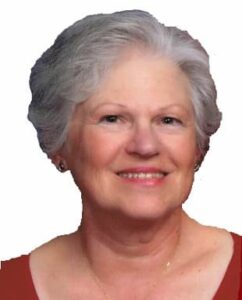
Bridging the Gap Between the Autistic & Non-Autistic Ways of Thinking
By Staci Neustadt MS CCC-SLP and Susan Golubock
“Do the best you can until you know better. Then when you know better, do better.”
~ Maya Angelo
Neuro Strengths-Based Support for Autism
In 2019, Susan came to me and shared that she had developed a new way to support autistic individuals. Susan was diagnosed on the autism spectrum in her early 50’s. As an occupational therapist, she became obsessed with understanding everything there was to know about the human brain. She desperately wanted to know why she was different. I was of course immediately intrigued. Having worked alongside Sue for a few years I always loved soaking up the knowledge she shared. Everything she had taught me made so much sense and worked!
Susan began educating me, a Speech Language Pathologist, and the therapists at our clinic on how the autistic brain works as well as accommodations, modifications, and assistive technology tools to use in therapy sessions. These were all tools that made sense to Sue and we found made sense to our clients. Sue often told us “Autistics have a thinking brain and non-autistics have a knowing brain.” It took a long time before I really understood what she meant. Probably because I just “knew” things and couldn’t relate to having to think about them.
NSBSA in Action
Over the next 3 years and after implementing the knowledge, strategies, and tools with clients, the Neuro Strengths-Based Support for Autism (NSBSA) framework has come to life (and ready for research.)
As a Neurodivergent individual myself (self-diagnosed with ADHD), learning about how the brain learns, processes, and retains (or doesn’t retain) information has been fascinating. Maybe my passion for NSBSA is because I can relate to some of the differences, maybe because I am passionate about supporting my clients in a humane and meaningful way, but either way I definitely see the need for change. When we (non-autistics) understand how an autistic brain processes the world, we perceive behaviors in a different way. In turn, we (non-autistics) respond from a place of understanding. Responding from a place of understanding instead of trying to “change” a behavior has such as significant, positive outcome. I have seen clients instantly go from dreading when we (therapists) arrive for therapy, to being excited and appear to feel empowered by having choice, agreements of equality during sessions (taking turns with activities and being allowed to “watch” instead of forced into activities through bribery). In addition we have seen, in sessions and generalized outside of sessions, trust for others. Trust that “if one person understands how I think, maybe other people will understand”.
The Need for a Paradigm Shift
As a non-autistic, I see the need for this paradigm shift and more so the URGENCY of making this shift. Why? When a person feels heard and understood, they feel valued and make connections with others. Life is about connections. It is human nature to want to connect with others. As an SLP, communication is also about connections. I have learned, through the NSBSA framework, that I no longer should focus on what I think the client should learn to say, or how they should communicate. I have learned to give them power through choice. “Do you want to use sign, AAC, and verbal approximations to fix this breakdown because I really want to know what you are telling me?” I have learned to REALLY think out of the box. I now look at sensory, processing, memory, input, and my output. When I look at the big picture, I understand WHAT my client is telling me and what they need. I don’t blame my client that I don’t understand, or for any of their behaviors. It is not their fault for seeing the world differently. It is our fault for not taking THEIR perspective for all these years. Ironically, something we often teach but only from our lens.
Susan is adamant that this perspective-taking be both ways. There is no question it would help if non-autistic people better understood autistic people, especially if they are trying to support them and care about them. It is equally important, however, that autistic people understand the perspective of non-autistics and why it is so hard for non-autistics to understand what they don’t experience. The only way to earn respect and acceptance for each of our individual differences is to give respect and acceptance. Finally, if autistic people are going to successfully advocate for the accommodations they need to thrive in a world that doesn’t understand them, they need to understand themselves better. The NSBSA framework is designed to foster both mutual understanding and self understanding between autistics and non-autistics.
It is time for a change. The change needs to happen now. Making Sense of Autism is here to help guide you through the paradigm shift. Let’s bridge the gap between the non-autistic and autistic way of seeing the world…
About the Authors:
 Staci Neustadt, CEO of Making Sense of Autism, is a licensed Speech-Language Pathologist with over 20 years’ experience providing speech therapy, training, mentorship, and leadership. Staci discovered her life’s purpose to support people with disabilities at a young age when volunteering. Staci joined Susan in developing the Neuro Strengths-Based Support for Autism framework. This framework helps bridge the gap between how non-autistics view autism and how autistics view themselves. Staci is passionate about creating a paradigm shift for therapists to support autistic clients so they feel seen and heard as they build on their strengths.
Staci Neustadt, CEO of Making Sense of Autism, is a licensed Speech-Language Pathologist with over 20 years’ experience providing speech therapy, training, mentorship, and leadership. Staci discovered her life’s purpose to support people with disabilities at a young age when volunteering. Staci joined Susan in developing the Neuro Strengths-Based Support for Autism framework. This framework helps bridge the gap between how non-autistics view autism and how autistics view themselves. Staci is passionate about creating a paradigm shift for therapists to support autistic clients so they feel seen and heard as they build on their strengths.
 Susan Golubock, a retired Occupational Therapist, was diagnosed on the Autism Spectrum in 1999. Susan has spoken throughout the US regarding Autism Advocacy. The philosophy for the Neuro-Strengths-Based Support for Autism Framework was developed from personal experience as an autistic individual, involvement in the autistic community, and professional experience with autistic clients. I learned from my husband about non-autistic ways of thinking and behaving. This duo-perspective radically changed my life for the better. I hope to do the same for others.
Susan Golubock, a retired Occupational Therapist, was diagnosed on the Autism Spectrum in 1999. Susan has spoken throughout the US regarding Autism Advocacy. The philosophy for the Neuro-Strengths-Based Support for Autism Framework was developed from personal experience as an autistic individual, involvement in the autistic community, and professional experience with autistic clients. I learned from my husband about non-autistic ways of thinking and behaving. This duo-perspective radically changed my life for the better. I hope to do the same for others.




